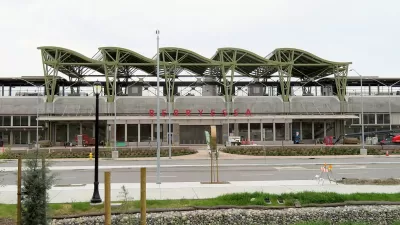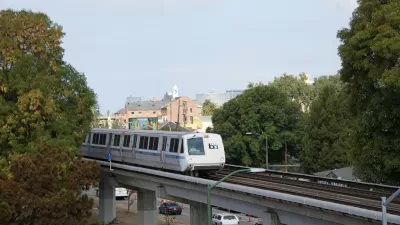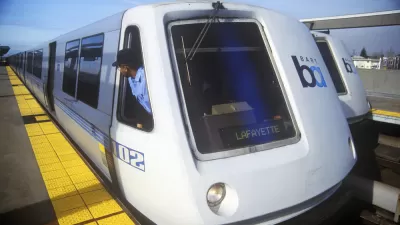Twenty years after voters first approved funding to build a BART extension into the heart of the South Bay Area, the project is finally ready to offer rides to the public.

"For the first time in BART history, trains will cross into Santa Clara County starting this June," report Fiona Kelliher and Evan Webeck.
BART officials this week announced that the "very-long-awaited" BART extension into Milpitas and San Jose would open to riders on June 13, 2020.
"At 7:56 a.m. on June 13, a Richmond-bound train will pick up passengers at the San Jose/Berryessa station, making BART’s first public train trip from San Jose, through Milpitas and continuing on what used to be known as the Warm Springs/South Fremont line," according the article. The new extension includes stops at two stations: the Milpitas Station and the Berryessa Station in San Jose.
As also noted in the article, the big opening will culminate a two-decade-long process of bringing the regional rail transit system into the highly populated Santa Clara County. "Voters first approved to fund the extension into Santa Clara County in 2000 with an increased sales tax," recall Kelliher and Webeck. The Santa Clara Valley Transportation Authority finally broke ground on the project in 2012, and now the extension is almost ready to open. Further extensions into San Jose and Santa Clara County face significant cost and construction hurdles, as reported earlier this year.
FULL STORY: Opening day set for long-awaited BART stations in Milpitas, San Jose

Trump Administration Could Effectively End Housing Voucher Program
Federal officials are eyeing major cuts to the Section 8 program that helps millions of low-income households pay rent.

Planetizen Federal Action Tracker
A weekly monitor of how Trump’s orders and actions are impacting planners and planning in America.

The 120 Year Old Tiny Home Villages That Sheltered San Francisco’s Earthquake Refugees
More than a century ago, San Francisco mobilized to house thousands of residents displaced by the 1906 earthquake. Could their strategy offer a model for the present?

HSR Reaches Key Settlement in Northern California City
The state’s high-speed rail authority reached an agreement with Millbrae, a key city on the train’s proposed route to San Francisco.

Washington State Legislature Passes Parking Reform Bill
A bill that would limit parking requirements for new developments is headed to the governor’s desk.

Missouri Law Would Ban Protections for Housing Voucher Users
A state law seeks to overturn source-of-income discrimination bans passed by several Missouri cities.
Urban Design for Planners 1: Software Tools
This six-course series explores essential urban design concepts using open source software and equips planners with the tools they need to participate fully in the urban design process.
Planning for Universal Design
Learn the tools for implementing Universal Design in planning regulations.
Ada County Highway District
Clanton & Associates, Inc.
Jessamine County Fiscal Court
Institute for Housing and Urban Development Studies (IHS)
City of Grandview
Harvard GSD Executive Education
Toledo-Lucas County Plan Commissions
Salt Lake City
NYU Wagner Graduate School of Public Service





























